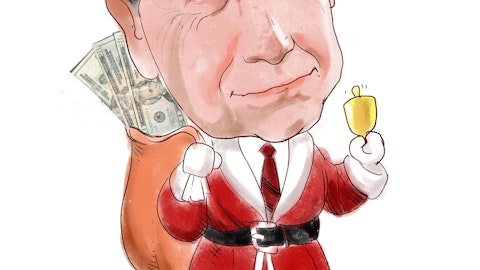It’s no secret that the stock market has had a good run lately. Since the horror of the most recent market downturn ended in March 2009, stocks have taken a virtually unabated run to new heights. The Dow Jones Industrial Average recently set a new all-time closing high, withstanding headline after headline that at times frayed the market’s collective nerves over the past few years. As a result, stocks that you’d consider screaming bargains are few and far between, as even the market’s blue chip companies look as though they’re fairly valued at best. There are a few world-class businesses, which while highly profitable and sure to keep paying dividends for years to come, are just too fully valued to be considered great buys right now.

Don’t forget about valuation
Johnson & Johnson (NYSE:JNJ) delivered yet another year of reliable, if unspectacular, operating results. Revenue rose 3% year-over-year, and diluted earnings per share clocked in at $3.86, representing a 10% increase versus the prior year.
Johnson & Johnson (NYSE:JNJ) holds a fantastic financial position and superbly profitable business. As a matter of fact, Johnson & Johnson is one of only four U.S.-based companies to hold an AAA credit rating from Standard & Poor’s. You could certainly do worse than one of America’s best companies accompanied by a 3% dividend yield.
Unfortunately, at recent prices, Johnson & Johnson (NYSE:JNJ) trades at an all-time high. Johnson & Johnson exchanges hands for 20 times its trailing twelve-month diluted earnings per share. That figure places its P/E ratio at its highest point over the last five years.
Pepsi has a long list of brands that appeal to consumers. The company has taken measurable steps to diversify its product portfolio, with additions including Quaker Oats and Lays. Pepsi is much more than just a soda company. To that end, the company’s revenue is evenly split between food and beverages. In total, Pepsi has 22 brands that each brings in at least $1 billion in annual sales.
Pepsi’s revenue actually fell 1.5% last year, not exactly a great sign for a stock currently trading very close to its all-time high. Moreover, Pepsi’s valuation is more befitting a company in the midst of a high-growth period: the stock’s trailing price-to-earnings ratio is 20. To illustrate further, consider that Pepsi’s dividend is now well below 3%, whereas investors could have enjoyed a dividend yield near 4% only a couple years ago.
Speaking of dividend yields that are nowhere near where they were a few years ago, there may be no better example than Philip Morris International Inc. (NYSE:PM). The stock began trading publicly in March 2008 after being spun-off from its former parent Altria Group Inc (NYSE:MO). Soon after, the stock actually declined along with the broader market, and traded around $45 as recently as June 2010. At that time, the stock yielded 5.2%.
Less than three years later, and despite consistent dividend increases, Philip Morris International Inc. (NYSE:PM) yields only 3.5%. Investors along the way have been handsomely rewarded with huge capital gains, but current investors are paying a much less appealing price. The company’s net revenues inched up less than one percent in 2012, and the stock appears fairly valued at almost 18 times trailing earnings. Tobacco is a fantastic business model and Philip Morris International Inc. (NYSE:PM) has intriguing growth potential, but it must be acknowledged that the tobacco industry faces a heightened level of risk, and as a result you shouldn’t be complacent in paying a premium to the broader market’s valuation.
The Foolish bottom line
One of my favorite Warren Buffett quotes is that it’s far better to buy a wonderful company trading at a fair price than a fair company trading at a wonderful price. While there’s certainly a ring of truth in that statement, most investors would probably also agree that the price you pay for a stock matters. Invest in an overvalued stock trading at exorbitant multiples, and you’re likely to earn sub-par returns no matter the quality of the underlying company.
These stocks are all well-run businesses that should be considered blue-chip stalwarts in their respective industries. At the same time, you can’t turn a blind eye to valuation. These stocks have each had huge runs that appear to be getting a little ahead of their growth potential going forward. Recent operating performance has left a little to be desired, and new investors just aren’t getting compelling valuation opportunities with these stocks.
The article Stocks You Should Buy (if Only They Were Cheaper) originally appeared on Fool.com and is written by Robert Ciura.
Copyright © 1995 – 2013 The Motley Fool, LLC. All rights reserved. The Motley Fool has a disclosure policy.

